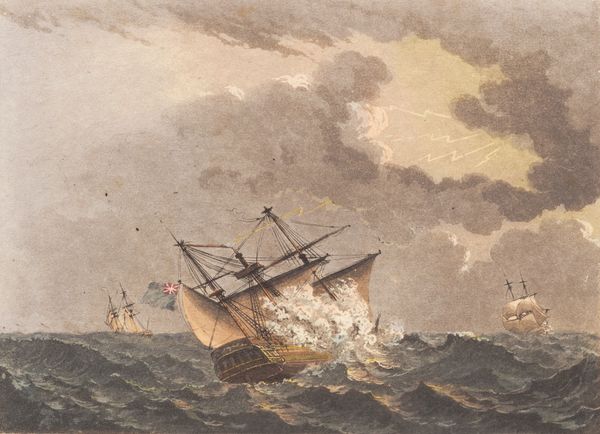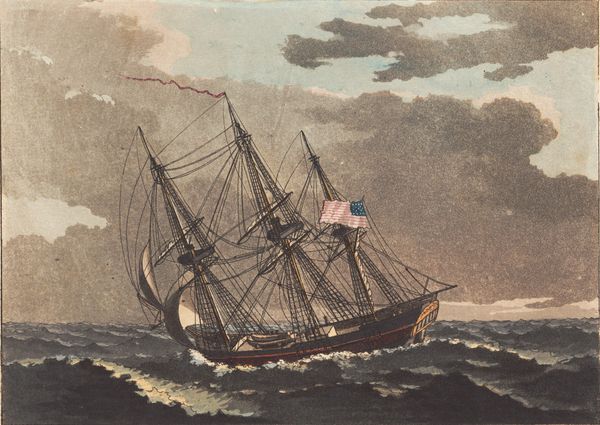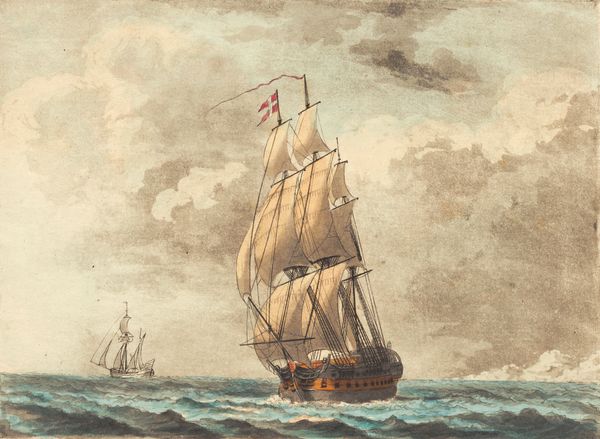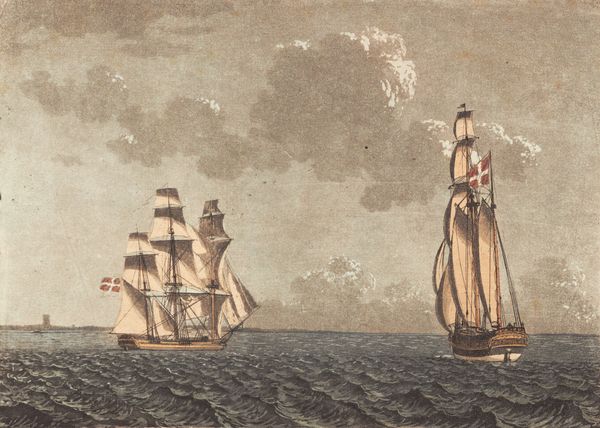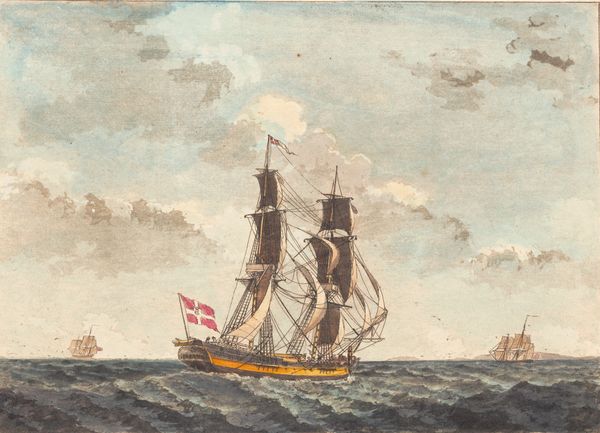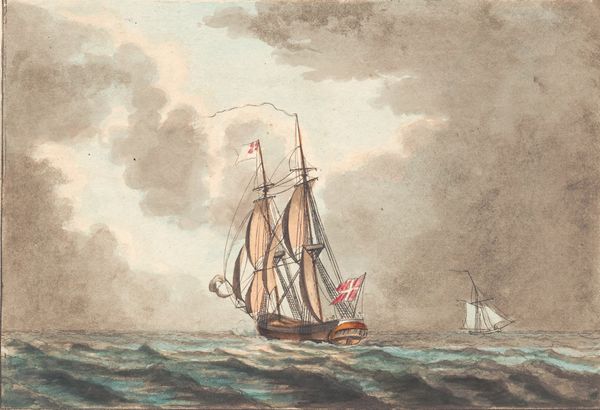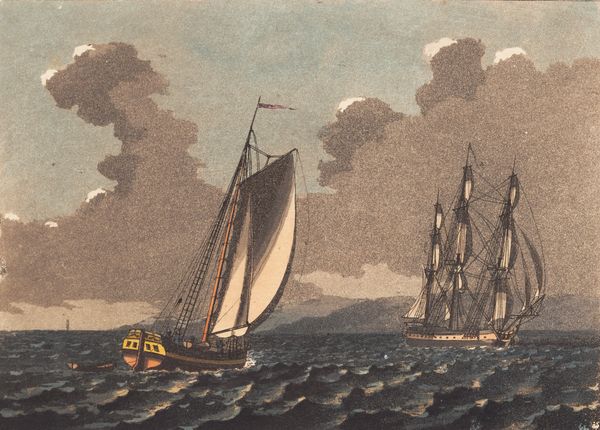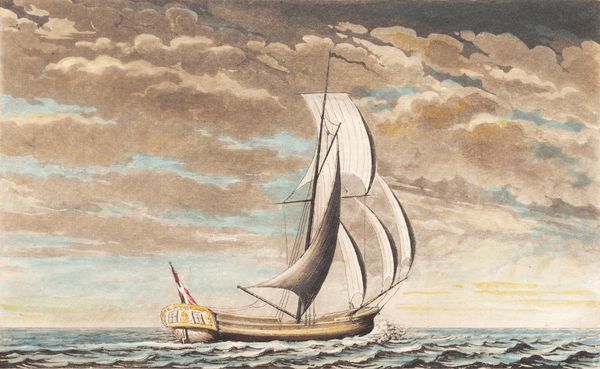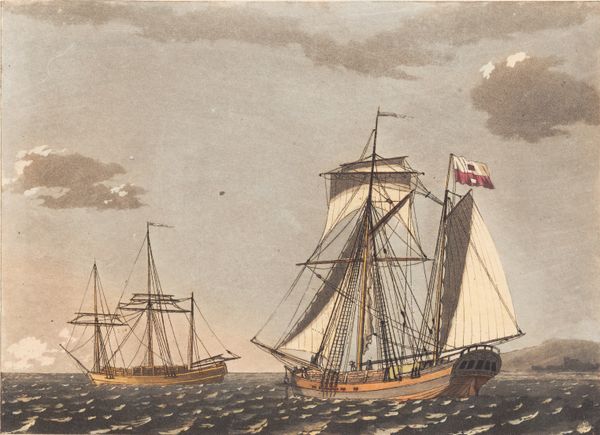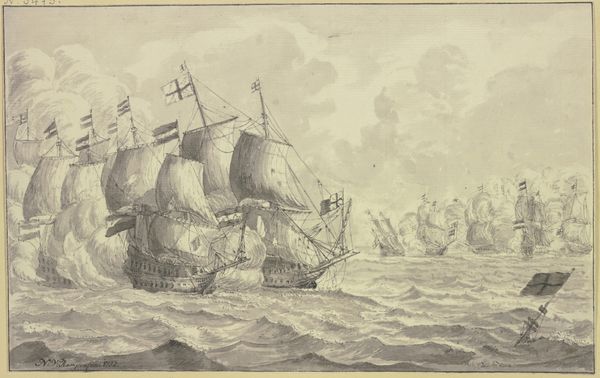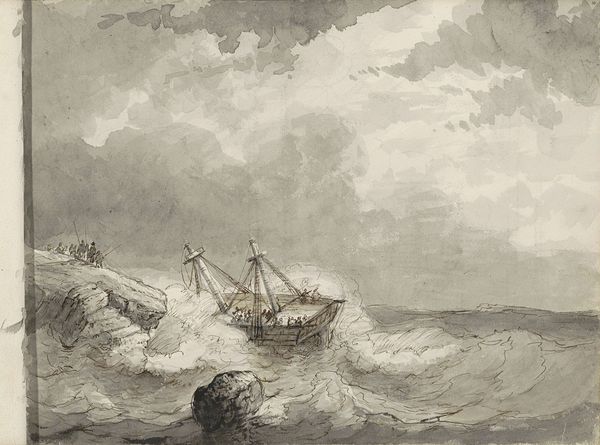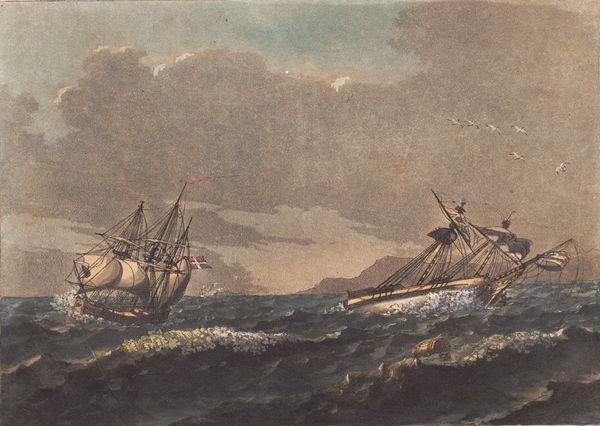
aquatint, print
#
aquatint
# print
#
landscape
#
romanticism
Dimensions: 194 mm (height) x 233 mm (width) (bladmaal), 164 mm (height) x 218 mm (width) (Plademål), 141 mm (height) x 197 mm (width) (billedmaal)
Curator: I'm immediately drawn in by the dynamism of this image—it's just waves everywhere! Editor: That's "A Ship in Distress Signalling for Assistance", an aquatint print made around 1805 by Niels Truslew, part of the collection at the SMK, the National Gallery of Denmark. You certainly notice the sea. Curator: Distress is the word! The poor ship is tossed around, almost toy-like, against that overpowering sea. The artist managed to catch not just the movement, but the whole *feeling* of being lost at sea. Even the color seems muted like everything is covered in sea mist. Editor: Well, sea disasters were a popular theme during the Romantic era, where ideas of the sublime and man’s helplessness against nature came to the fore. The print comes from a historical period rife with naval conflict for Denmark. Artists like Truslew depicted such dramas, and prints allowed for broader distribution, reflecting the nation’s maritime anxieties. Curator: Anxieties—yes! Looking at it, I can almost hear the creaking wood, feel the spray. It makes me think about my own battles, not against the ocean, but just…the relentless, crashing waves of daily life. That little Danish flag flapping seems both defiant and futile. Editor: That flag is a bold claim for assistance, for national solidarity perhaps. But, it’s interesting how a mass-produced aquatint could foster national sentiments, even as it depicted the fragility of national power on the seas. We can view the piece as cultural propaganda in the Age of Revolutions. Curator: Propaganda—perhaps. For me, the human spirit endures. That single ship fighting. You look at this piece, and you’re hit by the raw, immediate danger, and also with how you may identify in our own moment. Editor: True. It’s a good example of how a historical object continues to offer contemporary resonance. We’ve each sailed our ships through troubled waters one time or another. Curator: Definitely gives you a new appreciation for smooth sailing, doesn't it? Editor: Indeed.
Comments
No comments
Be the first to comment and join the conversation on the ultimate creative platform.
